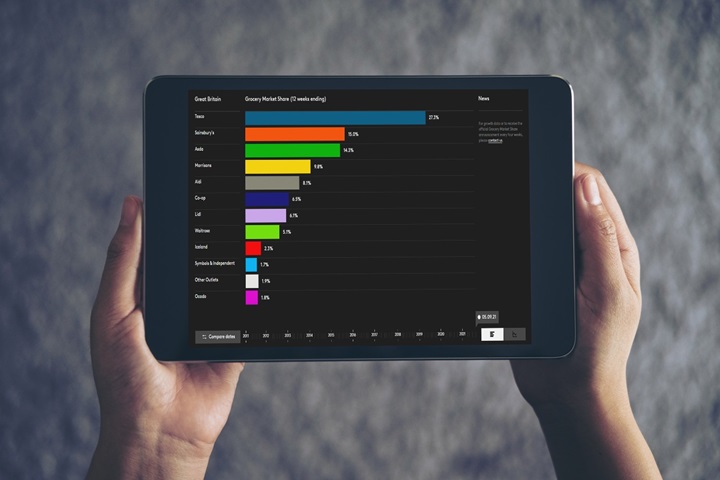Our latest figures show that the Irish grocery market declined by 5.2% year-on-year in the 12 weeks ending 16 May. In the most recent four weeks, sales fell by 6.9% compared with the same period last year, which saw record-breaking growth at the height of Ireland’s first COVID-19 lockdown.
While grocery sales may have dipped this month, that does reflect a tough comparison against the unprecedented spend we saw this time last year. People are still filling their baskets more than they were before the pandemic, and if we compare the past 12 weeks to the same time two years ago, sales are actually up 18.8%.
There are also positive signs that consumer confidence is on the rise. With the ongoing vaccine rollout and social distancing restrictions starting to ease, Irish shoppers are beginning to head back out and visit the shops more often. Consumers made an additional 2.1 million trips to the supermarket in the latest four weeks when compared with last year. Retired people in particular are leading the charge. They visited the grocers an extra 380,000 times this month.
Keen to return to the high street
The data suggest that once more restrictions are lifted, shoppers will be keen to get back to their town centres. We’ve already seen people embracing the reopening of beauty salons this month, for example. Irish shoppers have taken the chance to pamper themselves rather than trying their hand at home makeovers. Sales of haircare and hair colourants have dropped by 7.4% and 9.4% as a result.
However, with lockdown rules still in place for much of the retail and hospitality sectors, shoppers have not shaken off all their lockdown habits just yet and many of the major themes of the past year prevailed again this month. We’ve learned to rely on the convenience of shopping online for our groceries, and in the latest 12 weeks online sales soared 38.3% compared with this time last year, adding €43.1 million to the market. Empty nest families led the growth, boosting sales by 113% and spending an additional €11.2 million on online shops versus last year.
Since the early days of the pandemic, shoppers have stayed closer to home for their supermarket trips and made a greater effort to support Irish brands. We can see a real desire among shoppers to buy local. Irish brands have gone from strength to strength, and our data show that Irish-made products and brands are generally growing faster than their imported counterparts. SuperValu and Aldi have both announced that they will be increasing the number of Irish products in store, and the likes of Tayto, Brennans, Avonmore, Denny and also Cadbury, which is manufactured in Dublin, have performed especially well in the past year*.
Unseasonable weather impacts spend on barbeque staples
An unseasonably wet and cold May impacted shopper behaviour and changed what people were putting in their baskets this period. Last year, the beginning of barbeque season was a relief and an opportunity to do something different for many people during the first lockdown, but so far poor weather has meant that we haven’t been rushing to cook outdoors. In the past 12 weeks, shoppers spent €330,000 less on chilled burgers and grills and €979,000 less on ice cream than last year. People also spent €59 million less on alcohol in supermarkets this period, the first year-on-year fall since the extraordinarily high alcohol sales during the lockdowns in 2020. As pubs and hospitality start to reopen next month, we expect sales through the grocers will continue to fluctuate as people can enjoy a drink out of their homes again.
SuperValu continued to hold the largest share of the grocery market at 22.2%. Its growth was primarily driven by shoppers returning to store more often, contributing an additional €41 million.
Tesco remained in the second-highest position with a share of 21.6%, while Dunnes accounted for 21.2% of grocery sales in this period. Both Tesco and Dunnes benefited from growing confidence among shoppers and attracted new customers into stores in the past 12 weeks, with shopper numbers up 25,100 and 28,200 respectively. Aldi also brought more customers through the doors, boosting sales by €9 million and helping it to retain a 12.2% share.
Lidl was the only retailer to grow in the past 12 weeks, increasing sales by 0.7% to account for 12.8% of the grocery market. This was largely due to shoppers spending an extra €9.1 million on branded items in store.



